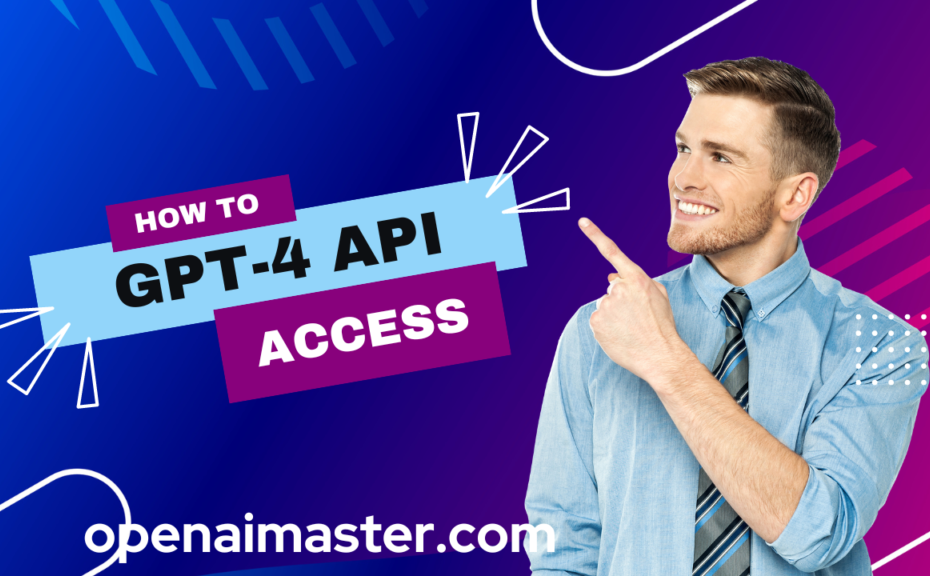Generative Pretrained Transformer 4 (GPT-4) is the latest artificial intelligence (AI) model released by OpenAI in 2023. As the successor to GPT-3, it introduces major upgrades in its ability to generate human-like text, synthesize images, answer questions accurately, and more.
However, public access to GPT-4 remains limited currently. In this comprehensive guide, we will explore the available options to access the GPT-4 API as a developer or business.
An Introduction to GPT-4
Let‘s first briefly understand what makes GPT-4 stand out:
- It has been trained on a massive dataset of internet text, books, code, and other content. This gives it a very broad understanding of the world.
- The model utilizes deep learning and can generate outputs with a great degree of human-level sophistication and nuance.
- GPT-4 introduces capabilities to process images, audio and other sensory inputs – making it multimodal.
- It can analyze prompts and provide coherent, complex responses – from short form to long-form content generation.
- The model aims for safety and responsibility with reduced biases and balanced perspectives.
With these advanced features, GPT-4 opens exciting possibilities in creative applications, personalized assistance, content writing, visual arts and much more.
But access currently remains restricted while OpenAI continues model tuning and scaling.
How Can You Access GPT-4?
There are a few options developers and AI enthusiasts can explore to get access now:
1. ChatGPT Plus Waitlist
OpenAI has released a subscription plan called ChatGPT Plus that costs $20 per month. It provides early preview access to some GPT-4 features through a Playground mode.
To sign up, you need to join the waitlist on chat.openai.com and await approval over a few weeks. This gives access to a playground chatbot interface to test GPT-4‘s capabilities.
Some benefits are:
- Cheaper than full API access that could cost thousands of dollars.
- Rate limits are reasonable for personal/non-commercial use cases. You get about 100 messages evaluated every 4 hours.
- Easy browser-based interaction without needing to write any code.
Once logged into ChatGPT Plus, you can easily switch the underlying model to GPT-4 and test it out. But output length is capped to ~250 words to the high compute costs.
Overall, it serves for early experimentation quite well before committing to commercial API access.
2. Apply for OpenAI‘s GPT-4 API
To integrate GPT-4 into an app or other commercial service, you can apply for developer access to the official OpenAI API:
- Submit an application describing your use case, delivery timeline and intended users.
- If approved, pricing can start from ~$0.002 per 1k tokens which comes to thousands of dollars for sizable volumes.
- Output length and frequency limits are also tightened initially but relaxed over time for customers.
- Approval is not guaranteed currently as OpenAI ramps up capacity.
The application process aims to ensure responsible use of large AI systems. As the models continue improving, OpenAI plans to open access more widely.
3. Use Alternative Services
Competing AI providers like Anthropic, Google, etc. also offer developer APIs for text generation:
- Anthropic – Recently released Claude API for free usage up to certain limits.
- Google and others will soon release APIs comparable to GPT-3 and GPT-4.
These serve as cost-efficient alternatives, especially for early research. But output lengths, coherence and accuracy still lag behind GPT-4 in tests. Integrations options are also fewer currently.
4. Set Up GPT-4 Using Python
For some hands-on experimentation, developers can directly interact with OpenAI‘s API using Python code:
import openai
openai.api_key = "YOUR_API_KEY"
model_engine = "gpt-4.5-turbo"
prompt = "This is a test prompt to generate text"
completion = openai.Completion.create(engine=model_engine, prompt=prompt, max_tokens=100)
print(completion.choices[0].text)The key steps are:
- Install OpenAI library
- Pass secret API key
- Set the model parameters
- Generate text by calling API
This allows customizing and scripting test cases flexibly. But output length gets limited without paid cloud credits.
Responsible Use of Large Language Models
While access options expand, how this powerful technology gets used matters greatly. Developers should provide guardrails in their applications against potential misuse or biases. Some tips:
- Validate facts – GPT-4 may hallucinate convincing but false statements at times. Cross verification is a must for decision making use cases.
- Counter societal biases by balancing dataset diversity and tuning on representative data.
- Enable user feedback loops to continuously improve safety.
- Clearly communicate model capabilities and limitations to set user expectations.
Hopefully the above guide gave you a clear overview of how to access GPT-4 capabilities today. What will you build with it? The possibilities are endless as AI continues pushing new frontiers!
